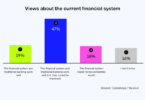Today the BIS Innovation Hub shared the results of its first proof of concept as part of Project Atlas. It aims to create a data platform for crypto and DeFi enabling central banks worldwide to analyze crypto-asset data. A first iteration focused on cross border flows of Bitcoin. It will also help to highlight cryptocurrency exchanges that inflate their activity. The central banks of the Netherlands and Germany participated in the project.
The BIS already publishes considerable data about all sorts of cross border flows. Hence, its desire to track crypto is consistent with the BIS’s role in macroeconomics. While the crypto-asset flows are insignificant for most countries, for some jurisdictions crypto flows might be substantial. That’s probably for countries with weak currencies.
“Atlas leverages the diverse skills of an inter-disciplinary team including developers and economists,” said Olaf Sleijpen, Executive Board Member at De Nederlandsche Bank. “It is great to see what the team has accomplished. Project Atlas could be a valuable tool for the central banking community for years to come.”
Project Atlas combines both public blockchain network data – on-chain data – as well as off-chain data. The latter is mainly data from exchanges and also the ability to add identifying data to on-chain flows. At this stage, the BIS was mainly interested in country-related identifiers. Crypto exchanges provide feeds to various analytics platforms.
The paper didn’t share how it accessed the exchanges’ data, although it mentions working with Austrian startup Iknaio Cryptoasset Analytics. Iknaio created the open-source Graphsense platform that looks like it may have inspired some of the design of Project Atlas.
Uncovering crypto exchanges that inflate volumes
When small businesses try to cheat on their taxes, what they often don’t realize is that the tax office aggregates data across business types. So they know roughly what your figures should look like.
This approach to tax, is really about pattern matching. And is not dissimilar to the BIS approach to analyzing cryptocurrency exchanges.
By using on-chain data, the BIS tracked the flow of Bitcoin transactions between exchanges. Logically, you’d expect that larger exchanges would have more flows between exchanges because their clients send Bitcoin to other exchanges. Using this data, the BIS can highlight exchanges that might be inflating their statistics. It’s not conclusive, but pinpoints areas for further investigation.
We’d observe that not all exchanges are equal. Some are more focused on retail or casual users. Others have a higher proportion of serious traders. Perhaps the serious trader exchanges might have a different pattern to the casual retail exchanges.
Intuitively, for serious traders one might expect a smaller proportion of inter-exchange flows because the clients are not sending Bitcoin to friends and family. On the other hand, serious traders tend to be active on several venues and will send money between them. Which could result in quite large transfers between exchanges. So perhaps the patterns are more similar after all.
There’s also a third check on whether exchanges are inflating their stats – reviewing their wallet holdings. You’d expect higher wallet holdings for those with more activity.






